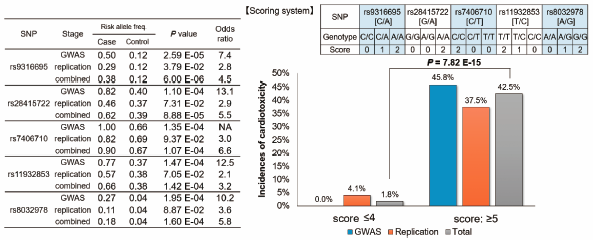-
Mari Hara Nakano
Project for Development of Liquid Biopsy Diagnosis, Japanese Foundation for Cancer Research, Research Institute Division of Breast and Endocrine Surgery, Department of Surgery, St.Marianna University School of Medicine
-
Chihiro Udagawa
Project for Development of Liquid Biopsy Diagnosis, Japanese Foundation for Cancer Research, Research Institute New Business Development Life Science Group, Toyo Kohan Co., Ltd.
-
Arata Shimo
Division of Breast and Endocrine Surgery, Department of Surgery, St.Marianna University School of Medicine
-
Yasuyuki Kojima
Division of Breast and Endocrine Surgery, Department of Surgery, St.Marianna University School of Medicine
-
Reiko Yoshie
Division of Breast and Endocrine Surgery, Department of Surgery, St.Marianna University School of Medicine
-
Hisamitsu Zaha
Department of Breast Surgery, Nakagami Hospital
-
Norie Abe
Department of Breast Surgery, Nakagami Hospital
-
Tokiwa Motonari
Department of Breast Surgery, Nakagami Hospital
-
Mikiko Unesoko
Department of Breast Surgery, Nakagami Hospital
-
Kenji Tamura
Department of Breast and Medical Oncology, National Cancer Center Hospital
-
Tatsunori Shimoi
Department of Breast and Medical Oncology, National Cancer Center Hospital
-
Masayuki Yoshida
Department of Pathology and Clinical Laboratories, National Cancer Center Hospital
-
Teruhiko Yoshida
Fundamental Innovative Oncology Core, National Cancer Center Research Institute
-
Hiromi Sakamoto
Fundamental Innovative Oncology Core, National Cancer Center Research Institute
-
Ken Kato
Department of Gastrointestinal Medical Oncology, National Cancer Center Hospital
-
Taisei Mushiroda
RIKEN, Center for Integrative Medical Sciences
-
Koichiro Tsugawa
Division of Breast and Endocrine Surgery, Department of Surgery, St.Marianna University School of Medicine
-
Hitoshi Zembutsu
責任著者
Project for Development of Liquid Biopsy Diagnosis, Japanese Foundation for Cancer Research, Research Institute Fundamental Innovative Oncology Core, National Cancer Center Research Institute
電子付録
2019 年 42 巻 12 号 p. 2045-2053
- Published: 2019/12/01 Received: 2019/06/25 Released on J-STAGE: 2019/12/01 Accepted: 2019/09/26 Advance online publication: 2019/10/09 Revised: -
(EndNote、Reference Manager、ProCite、RefWorksとの互換性あり)
(BibDesk、LaTeXとの互換性あり)



